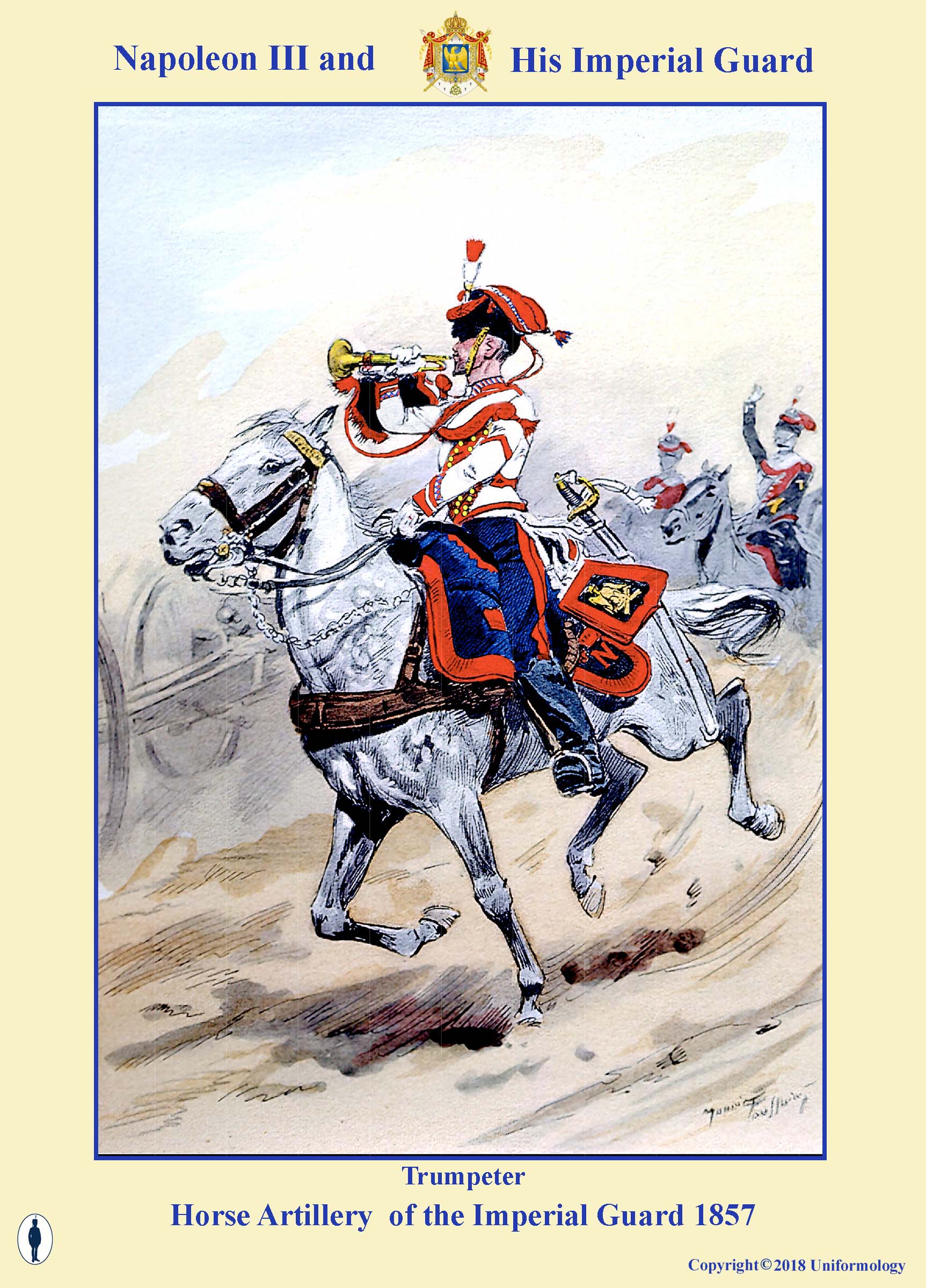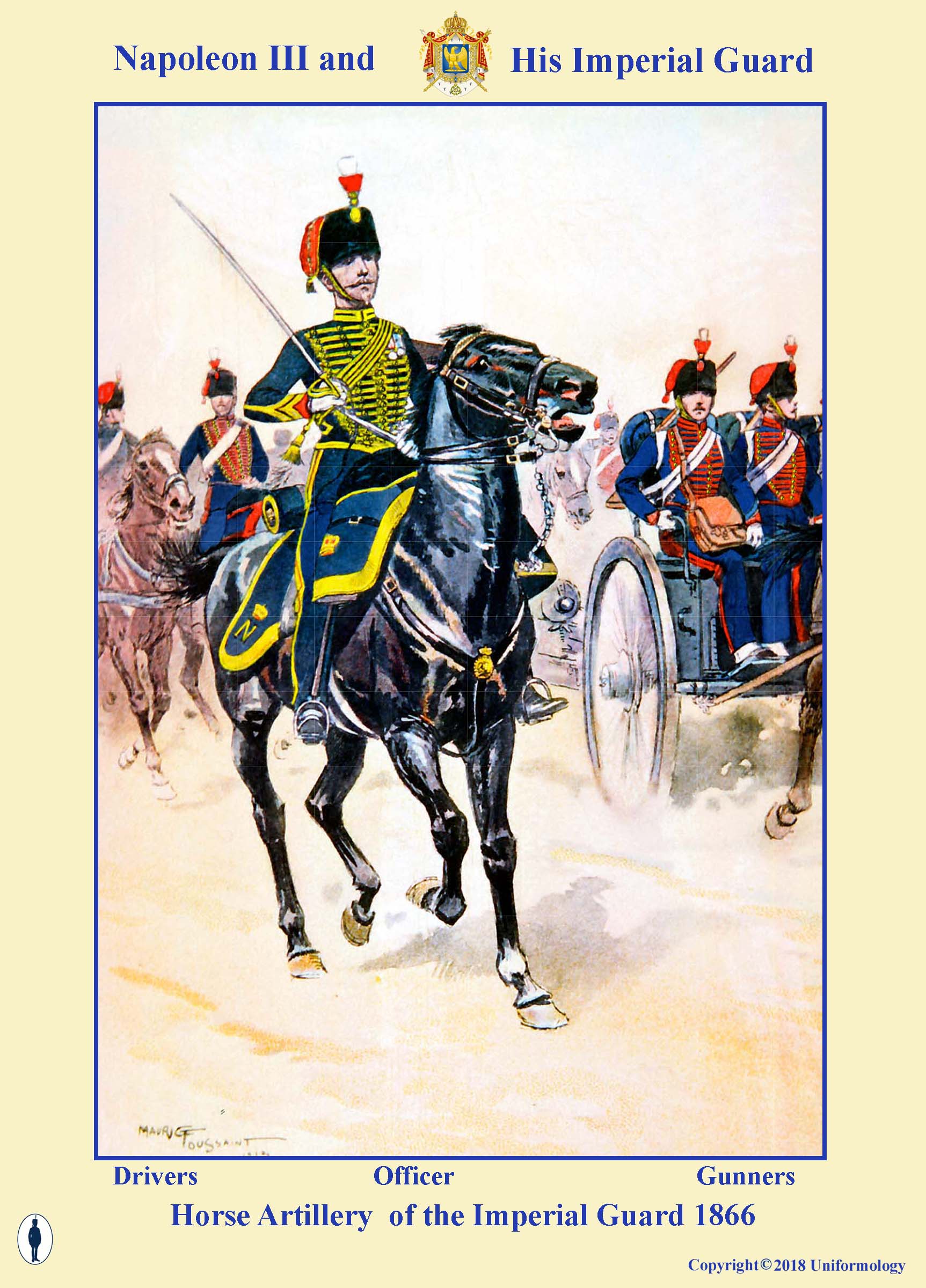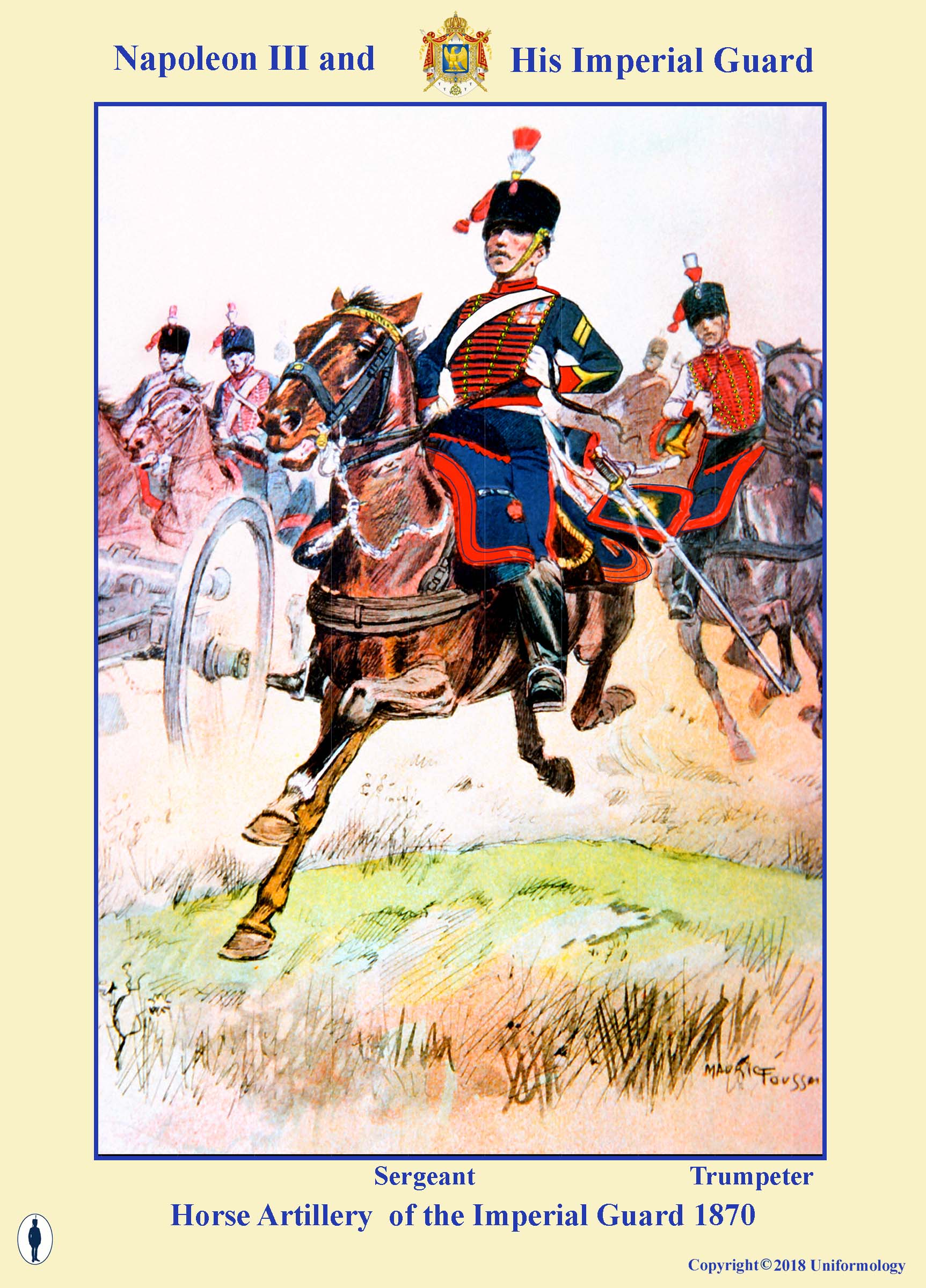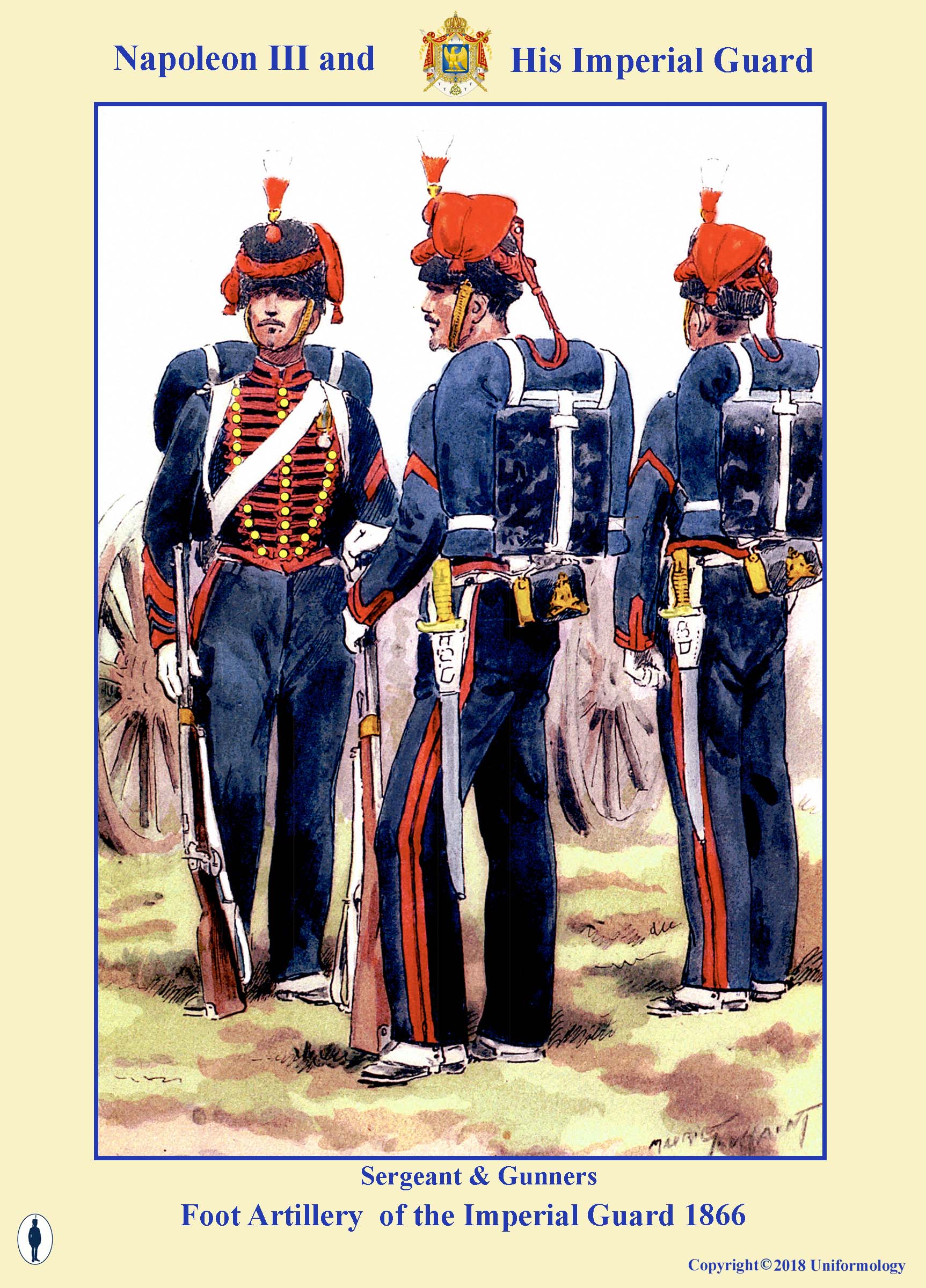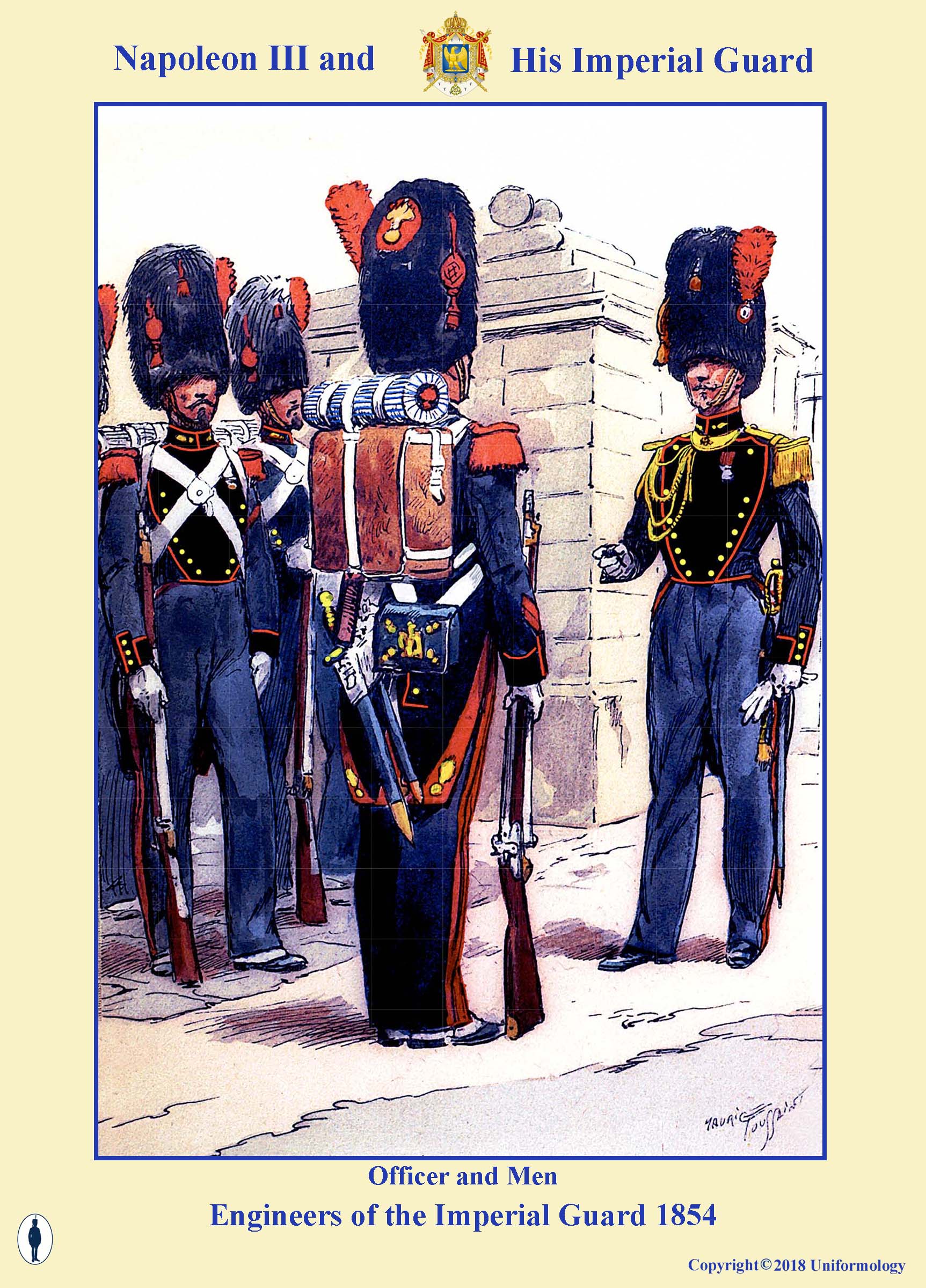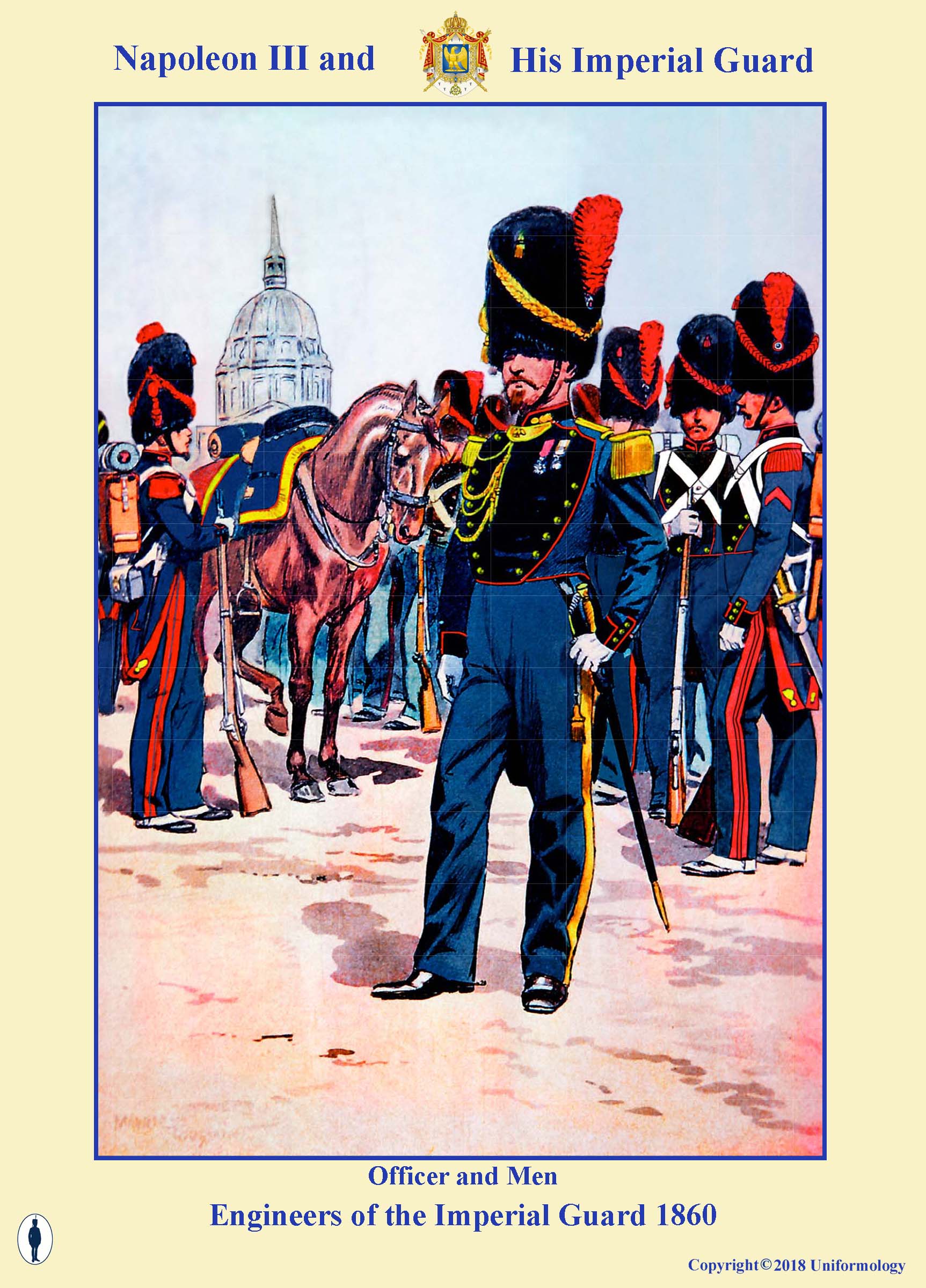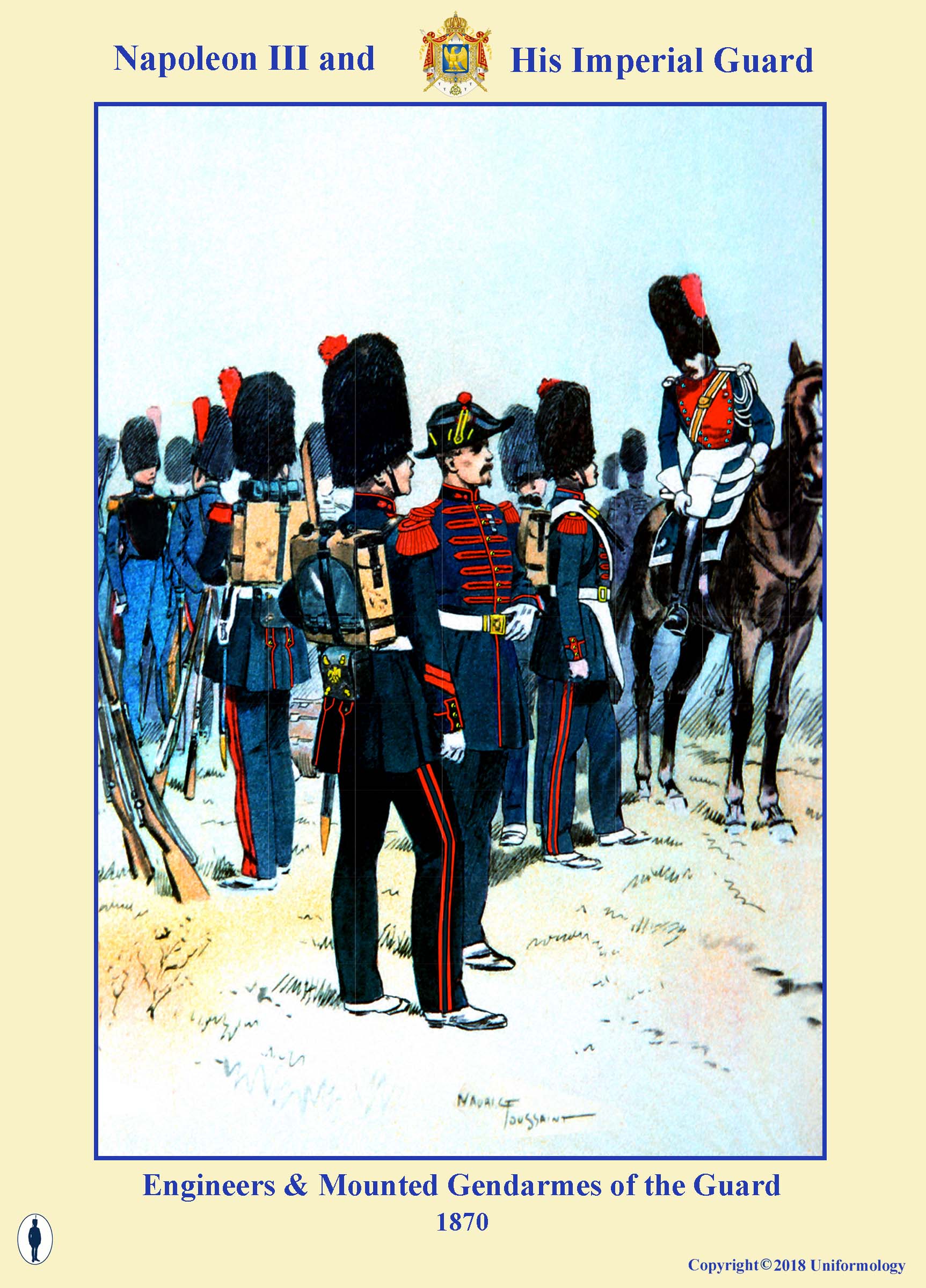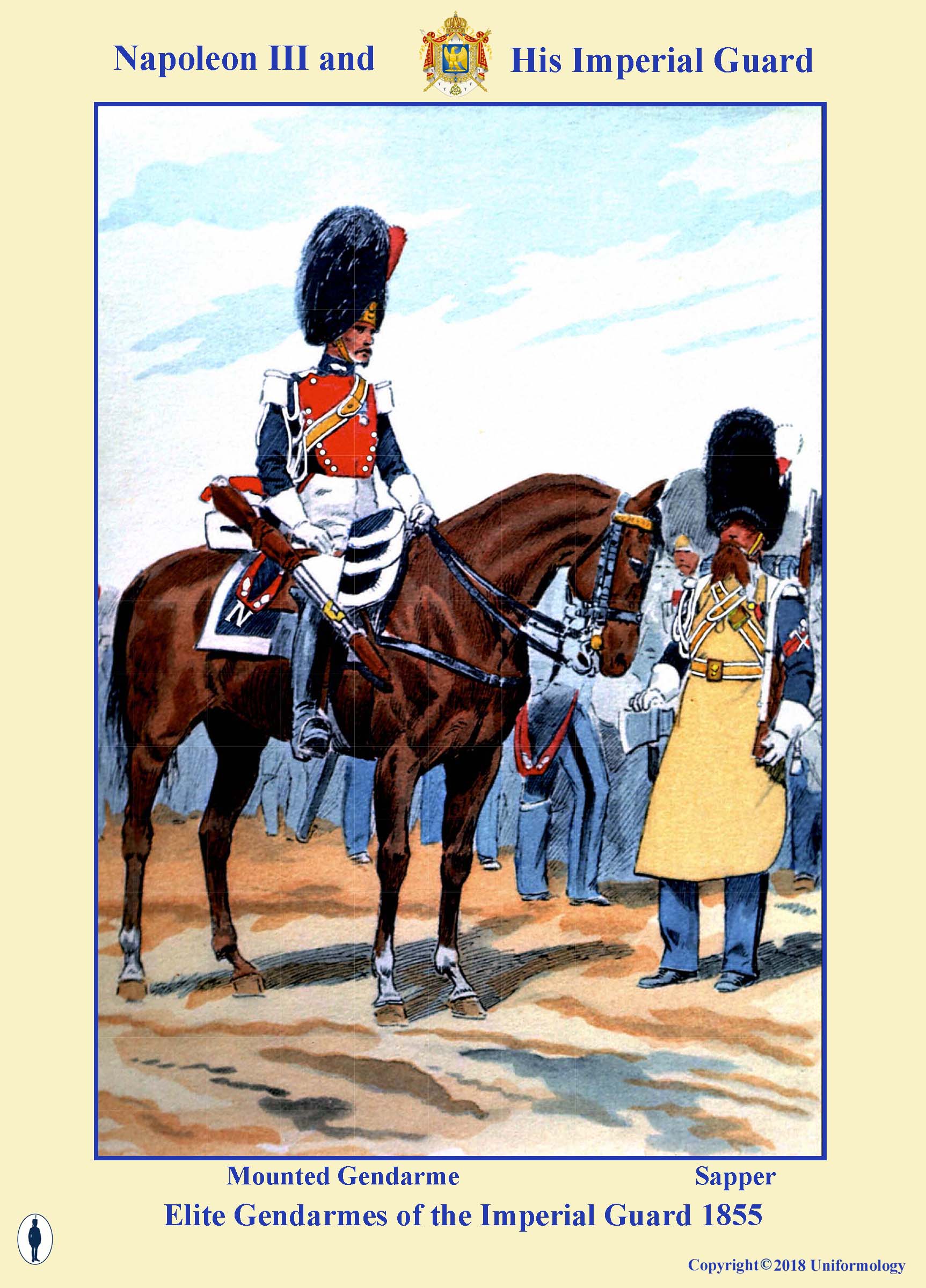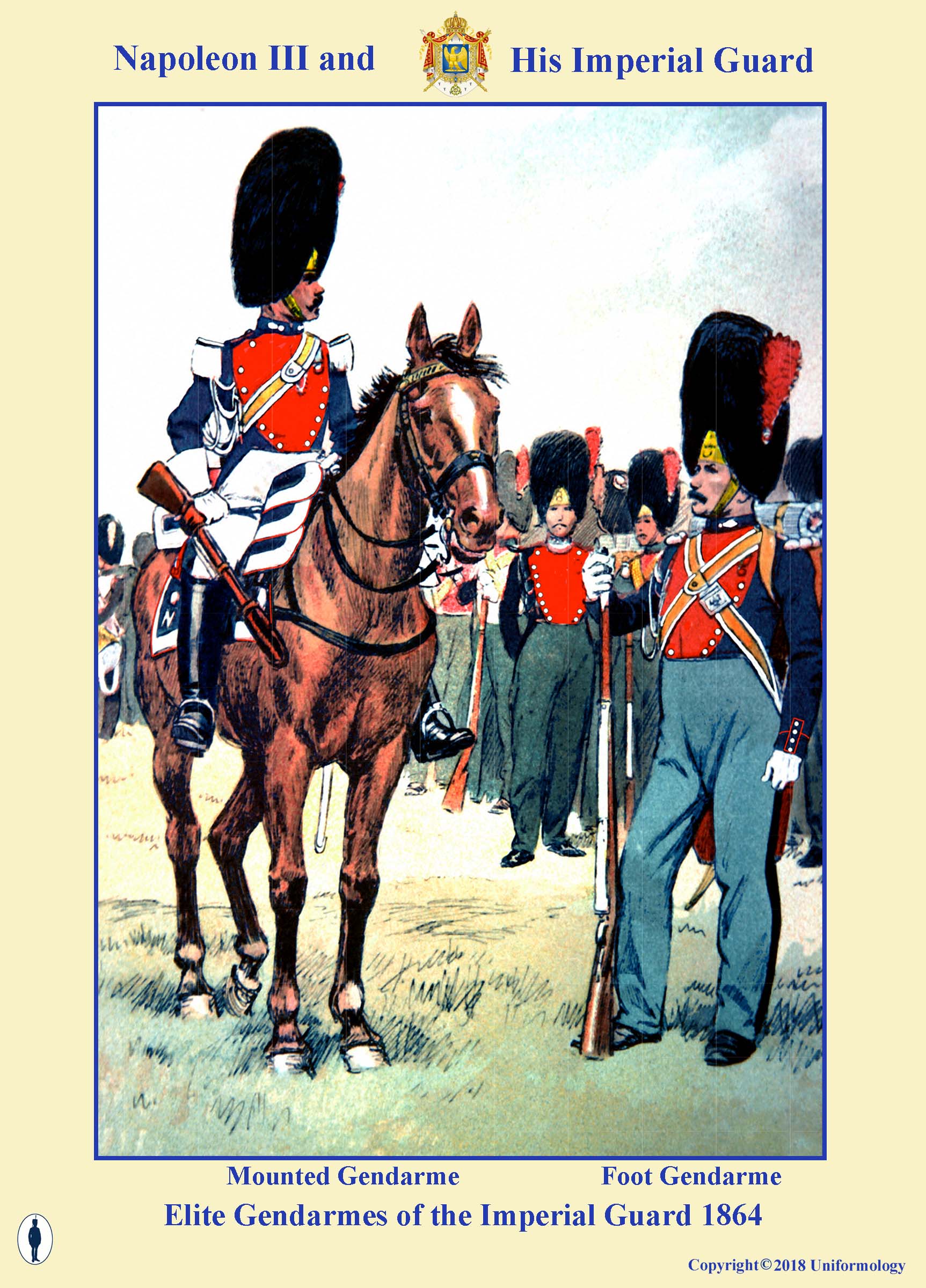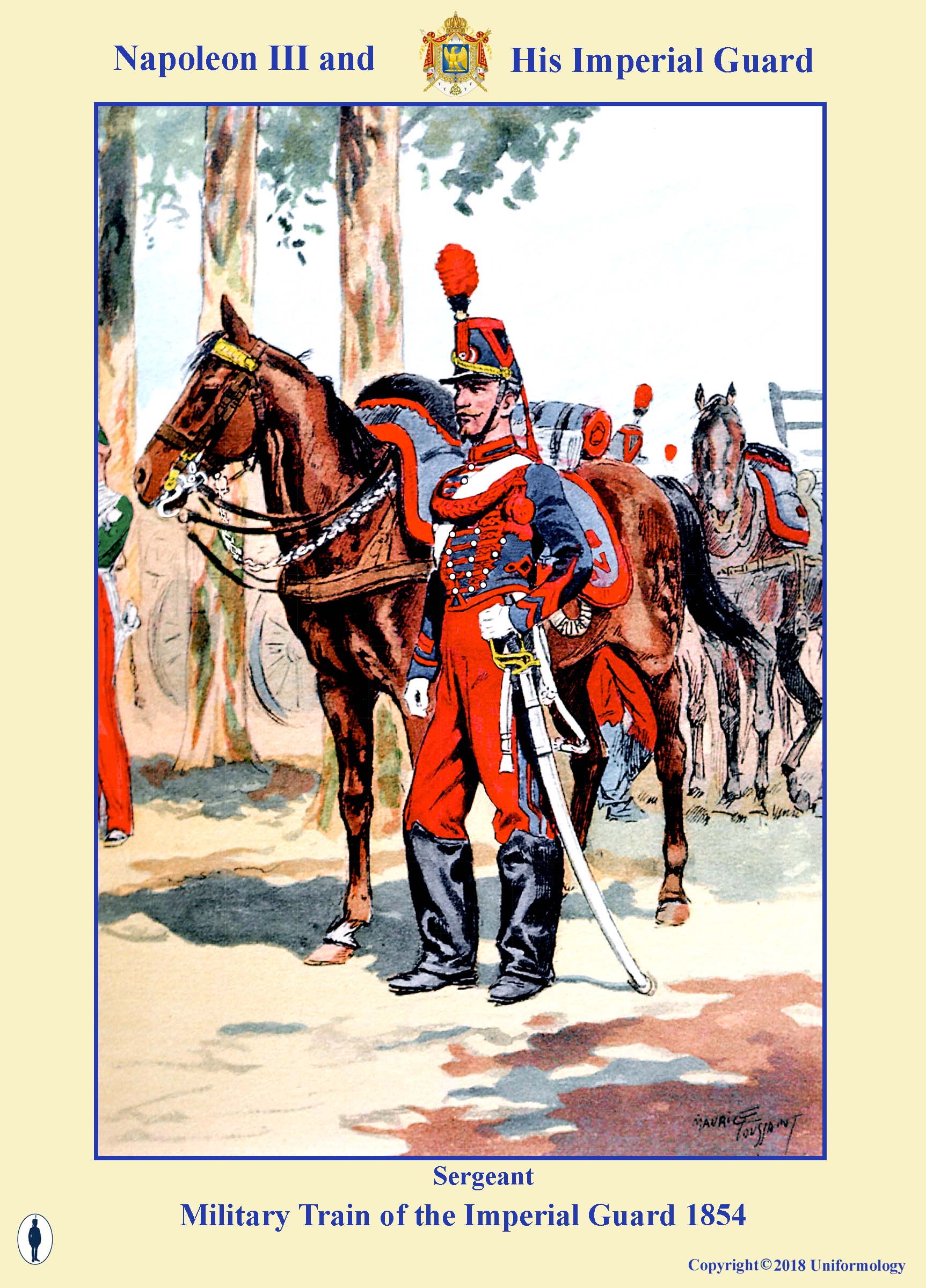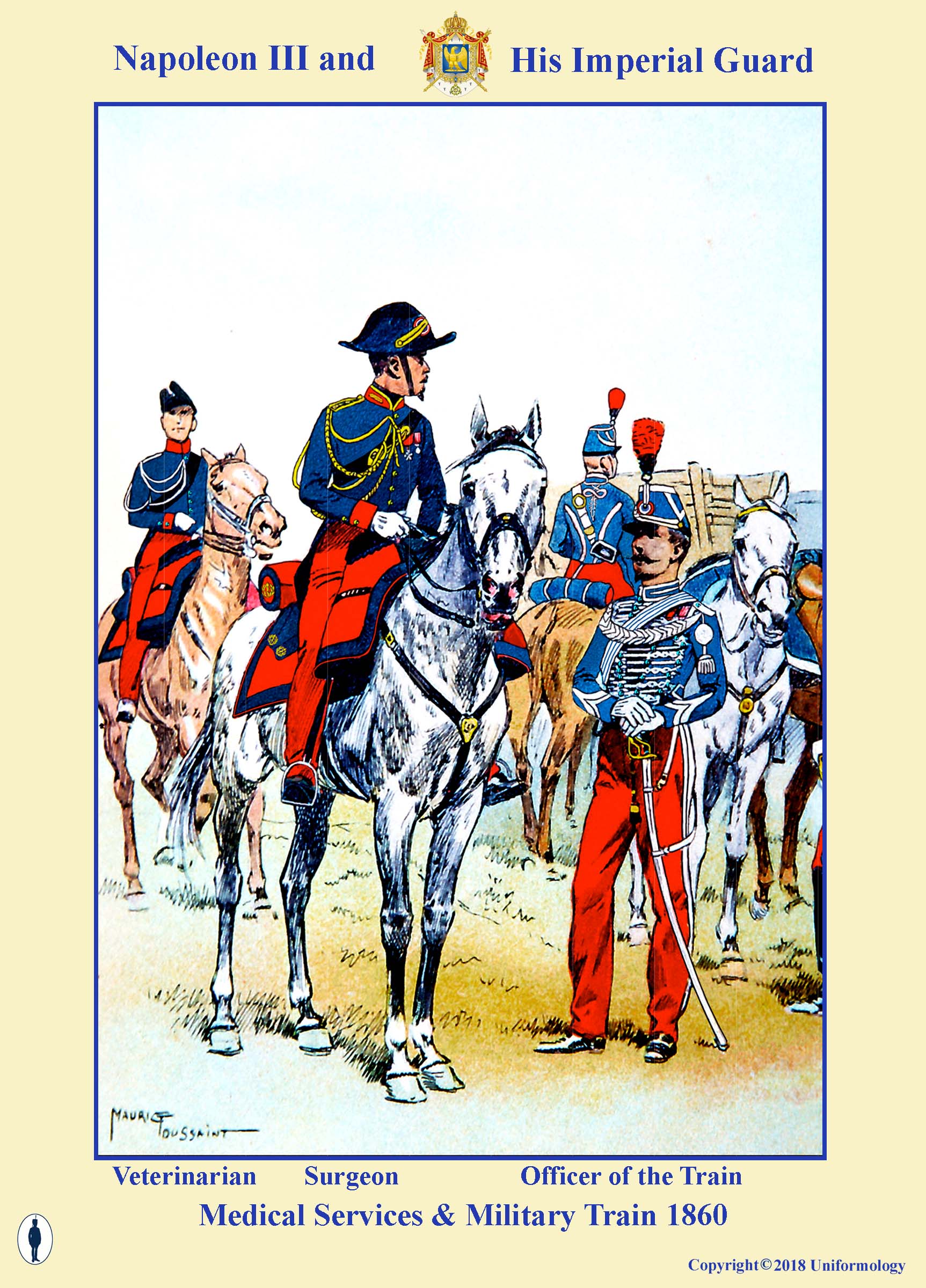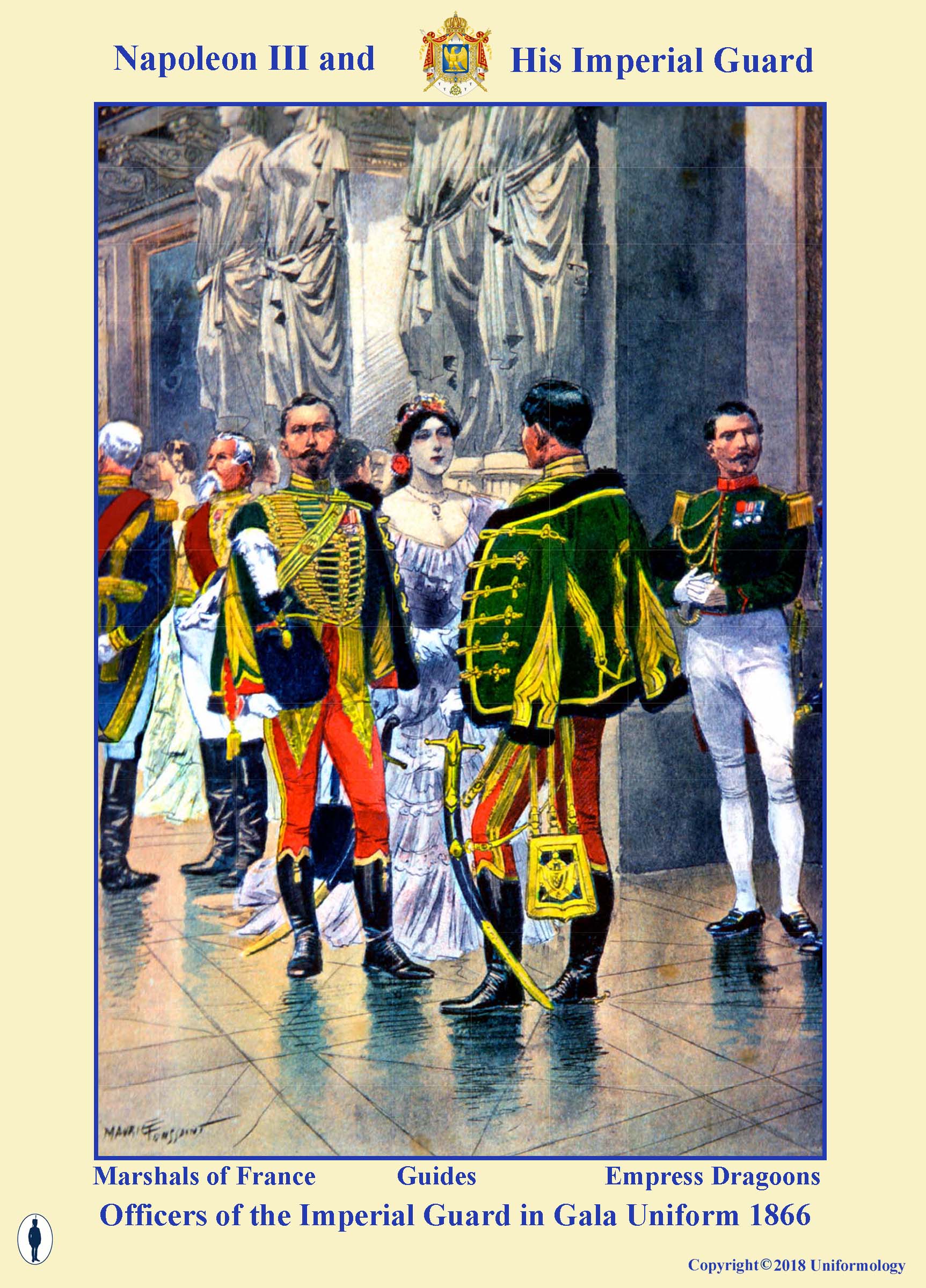THE WORLD OF MILITARY UNIFORMS
1660-1914
THE IMPERIAL GUARD OF
NAPOLEON III 1854-1870
By Maurice Toussaint
Page 3
Artillery of the Guard
One of the original regiments of the Guard, the horse artillery consisted of five batteries of four-pounders. The following year a foot regiment of six batteries was formed as well as an additional battery for the horse artillery. In reality, the foot artillery was field artillery as it rode into action on the limbers and caissons. The uniforms were similar to the hussars with blue jackets frogged and faced in red with colpacks and red bags. The plumes were white over red. The officers loops were in gold instead of red. The artillery saw action in all the campaigns in which the Guard took part.
Engineers of the Guard
Like the artillery, the Engineers (Genie) took part in all the campaigns. Raised as a single company in 1854, they soon were augmented by another company when the Guard was expanded. The uniform was singularly magnificent and far more imposing than would be expected for a unit whose tasks were the least glamorous. The blue coatee was dark blue with black facings (velvet for officers) and red piping. The front was adorned with a black plastron piped red also and the trousers were of coatee color with double red stripes. The headdress was the tall bearskin cap worn by the Grenadiers with brass plate. In 1860, the uniform was changed in line with the guard infantry. The tunic now had seven red loops across the chest but the bearskin and trousers remained the same. In the 1870 campaign, they wore the bonnet de police or the kepi if they could secure one.
Elite Gendarmes of the Guard
Military Train of the Guard
The Military Train formed in 1854, wore a uniform similar to that of the Genie with the exception of blue facings instead of black and a blue shako with red distinctions and a red over blue plume. The following year, however they were expanded to three companies and adopted a uniform more like the artillery except that they retained the shako and wore red trousers with a blue stripe. The lace loopings across the chest were silver for officers as was all other lace on the shako and either side of blue stripe on the red trousers. The artillery had its own train for ammunition and supply wagons which wore the artillery uniform with a gray jacket instead of blue with a shako.
Medical & Veterinary Services of the Guard
Since the Guard was raised as the equivilent of a self contained Army Corps, (although smaller) it maintained a full complement of ancillery units including medical and veterinary officers. Their uniforms were very similar to those of the regular army except for the trousers in garance red.
The Imperial Guard at Court
The magnificence of the uniforms worn by the Emperor's Imperial Guard were especially prominent at official functions, balls and galas. Uniforms were specially designed for such occasions.
The war of 1870 found the Guard as unprepared as the rest of the army to stem the swift Prussian advance. Those who were not killed, wounded or captured in the battles preceding Sedan, retreated into the fortress city of Metz where they remained bottled up until October when the city surrendered. As they marched into captivity, they also marched into oblivion as, in France a new Republic was now in the offing and there was no longer an Emperor for them to serve.
THIS SECTION ON THE IMPERIAL GUARD OF NAPOLEON III WILL SOON BE AVAILABLE ON CD AND/OR DOWNLOAD.
STAY TUNED FOR DETAILS

